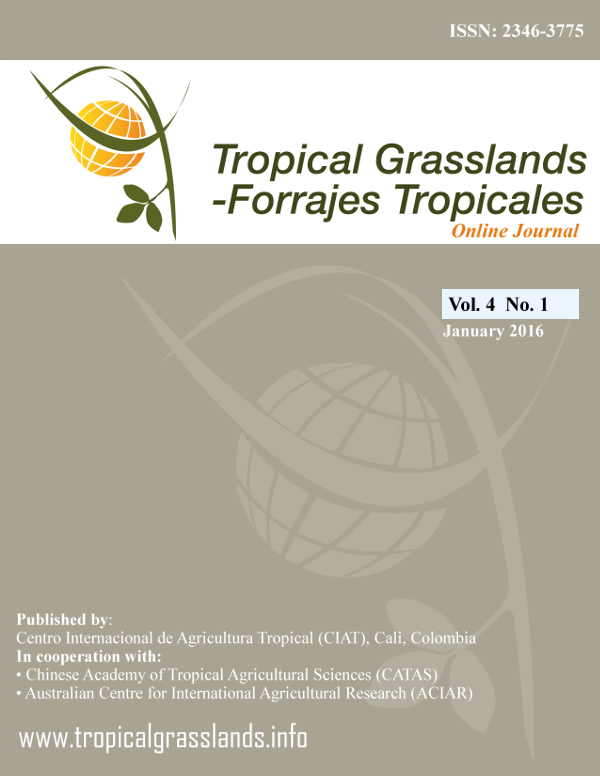Growth responses of nine tropical grasses under flooding conditions
DOI:
https://doi.org/10.17138/tgft(4)1-7Abstract
The diversification of forage grasses is a strategic solution to obtain higher productivity in diverse environments. In this regard, the objective of the present study was to evaluate in a glasshouse study the flooding tolerance of 9 cultivars of forage grasses. The study was conducted using a complete randomized design with a 9 x 3 factorial arrangement: 9 cultivars (Brachiaria brizantha cvv. Marandu, Piatã e Xaraés; hybrid Brachiaria cv. Mulato II; B. humidicola cvv. Llanero and Tupi; B. ruziziensis cv. Common; Panicum maximum cvv. Massai and Tanzânia) and 3 soil water levels: a) minimal water for development (50% of field capacity); b) field capacity; and c) flooded soil (2 cm above soil level), with 3 replicates. Forage accumulation, plant height and root accumulation were evaluated. All cultivars grew well in soil at 50% field capacity highlighting their adaptation to mildly dry conditions. Under flooded conditions, B. humidicola cvv. Llanero and Tupi showed no reduction in forage dry matter production, while shoot growth of cvv. Marandu, Piatã, Tanzânia and Xaraés was significantly reduced (P<0.001) by 71.3, 94.0, 81.2 and 77.2%, respectively. Root mass was reduced about 30% in flooded plants relative to those grown at 50% field capacity. While all cultivars could be used where soil moisture is marginal for production, cvv. Llanero, Tupi and Massai would be most suitable where flooding could occur during the growing season. Field studies are needed to verify these glasshouse findings.
Keywords: Brachiaria spp., forage mass, Marandu Death Syndrome, Panicum maximum, root mass, soil water levels.
DOI: 10.17138/TGFT(4)1-7




